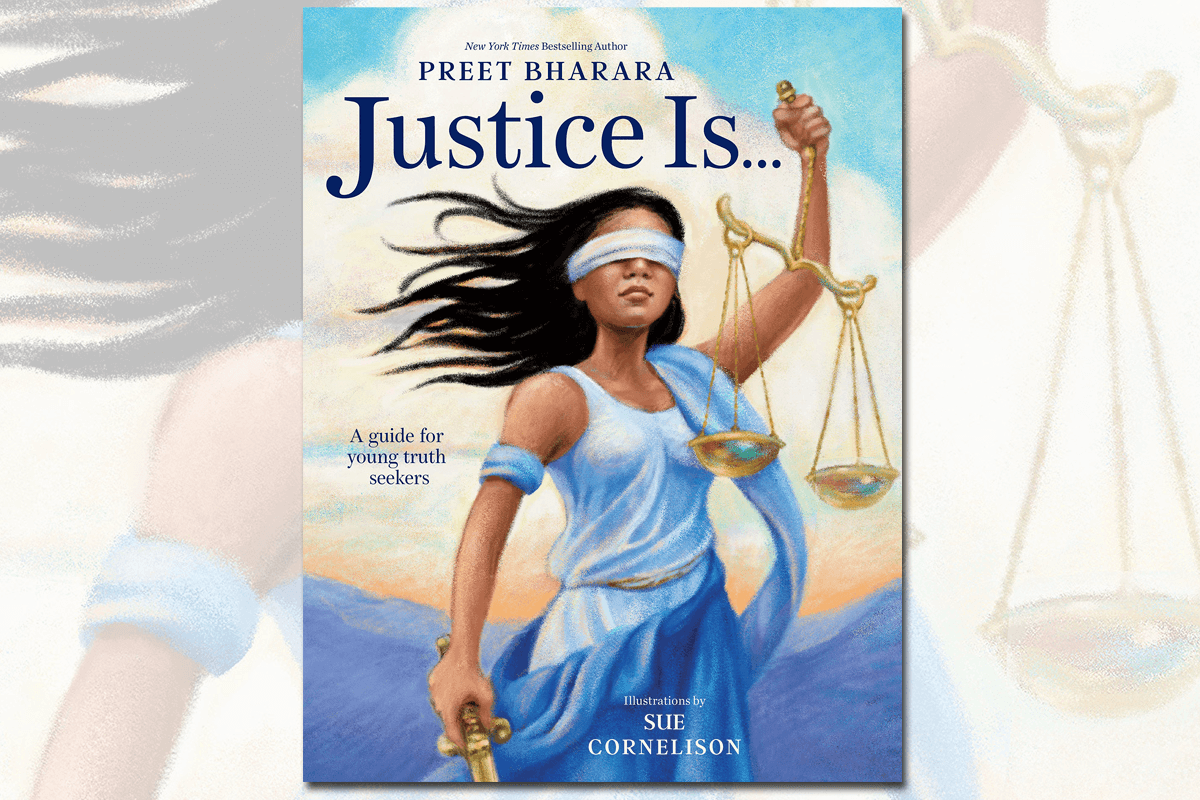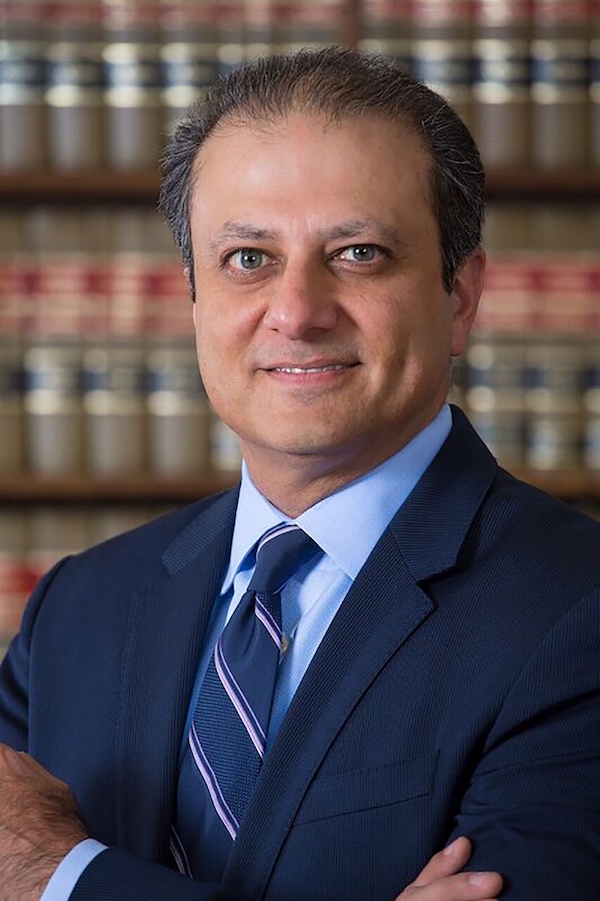
The former U.S. attorney for the Southern District of New York, Preet Bharara, is out with a new children’s picture book, Justice Is…A guide for young truth seekers.
If the initial reception is any indication, the book looks to be headed for America’s classrooms and school libraries. “If you believe in civic education, Preet Bharara has written a great children’s book to get the kids you care about started,” tweeted a professor at the University of Alabama School of Law, Joyce Alene, who is a legal analyst for NBC News. “Every School Library needs this!” The jacket copy notes, perhaps anachronistically, that justice is “a word said aloud in classrooms every day during the Pledge of Allegiance.”
I had a look at the book myself. While I certainly wouldn’t advocate banning it, I can tell you that the volume sure could have benefited from a more skeptical edit. It’s the sort of thing that has been getting parents riled up—a book billed as “a guide for young truth seekers” that winds up providing a portrayal of American reality that is, in significant ways, false. It offers the same grim view of a structurally racist America that can be found in critical race theory.
What’s particularly disappointing, or at least paradoxical, is that the opening lines of the book pay lip service to heterodoxy. Justice takes “an open mind,” the book says. “Justice needs to hear every side of the story.”
Alas, some sides of the story are missing from this book. The side of the police, for one, is absent. Brightly colored illustrations in the book portray Black Lives Matter protesters as peaceful justice advocates. The police, on the other hand, are seen exclusively as an all-white force about to beat up Civil Rights leader John Lewis. What about the side of the story in which police, including officers and chiefs of color, arrest violent criminals or protect people and property? It is nowhere to be found in this book.

Also absent is the side of landlords. A two-page spread with the words “Sometimes people worry that there is no Justice in the world” features “The Holocaust,” “The Trail of Tears,” “Slavery” and “Tenement Slums.” One of those things is not like the other three. Yes, some landlords are and were abusive or negligent. But as a general matter, providing temporary low-cost housing to poor, rent-paying immigrants in a voluntary, mutually agreed-upon commercial relationship is not the same thing as genocide or as race-based involuntary servitude. Outlawing single-room-occupancy buildings or other “tenement slums” can have the unintended consequence of rendering affordable housing scarce-to-nonexistent, spawning the urban homeless encampments that even Democratic progressive mayors have been bulldozing.
The presentation of World War II is similarly one-sided. A two page spread shows “Japanese American Internees” as an example of how justice “can even be denied—for a time.” The Holocaust image shows the gates of a concentration camp. Absent are the American troops, including Japanese American soldiers, who risked their lives to liberate Europe. The book describes Japanese American internees as among those who “stood for justice” but fails to name Fred Korematsu, whose attempt to challenge President Franklin Delano Roosevelt’s internment policy ultimately failed at the Supreme Court.
A jarring note is present in the cast of characters at the end of the book. Under the heading “They Stood for Justice,” at the end of a long list that includes Frederick Douglass, Abraham Lincoln, Malala Yousafzai, Nelson Mandela, Harvey Milk, Black Lives Matter, Mohandas Ghandhi, and John Lewis comes, of all people, “Richard Nixon.” The book explains that Nixon “became the first and only president of the United States to resign, to avoid being impeached and removed from office for his role in the Watergate scandal. Brave investigative journalists and their newspapers risked their careers to expose his corruption, believing that no American is above the law.” It’s not clear whether Bharara wants to somehow rehabilitate Nixon by giving him credit for resigning (in contrast to, say, Donald Trump), or whether this is just clumsiness or poor execution, and instead of Nixon on the list it should have been Bob Woodward, Ben Bradlee, Sam Ervin, or Leon Jaworski. Perhaps the inclusion of Nixon, a Republican, is meant to demonstrate that the book is nonpartisan, though that goal is also accomplished by including Lincoln.
As the top federal prosecutor in Manhattan, Bharara’s insider trading and public corruption cases were frequently reversed or rejected by judges. Bharara also subjected defendants to “perp walks” that other jurisdictions avoid because they risk threatening the presumption of innocence and effectively interfering with an accused’s right to a fair trial. Now he’s spending his time writing a children’s book about justice?
One children’s book I would like to read would be about how Jagdish Bharara, the first in his family to attend college, immigrated to New Jersey from India and saw his immigrant son Preet become a celebrity federal prosecutor and his other, American-born son, Vinit, build Diapers.com and sell it to Amazon for $545 million. America isn’t all tenement slums and Trail of Tears and Japanese internment camps and the police beating up John Lewis. If Preet Bharara isn’t up to telling that side of the story, perhaps some other author will. It would make a compelling tale for those “young truth seekers.”
Ira Stoll is managing editor of Education Next.


